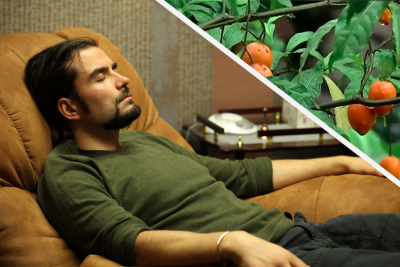

by Alanna Ketler, Collective Evolution
Ibogaine, an isolated active alkaloid, comes from the root bark of a shrub from central West Africa called Iboga. It has been used for thousands of years in ceremonies for spiritual development and in many tribes and cultures as a right of passage into adulthood. Iboga may be the most powerful psychedelic known to man.
In recent years it has been found to have amazing success with treating various addictions, specifically addiction to opiates.
Its ability to mitigate intense opiate withdrawals was discovered in the late 1960s. Since this discovery, studies undertaken by many research and academic facilities have proved that one of the 14 isolate alkaloids of Iboga — Ibogaine — is an extremely effective treatment for addiction to most substances, even the most addictive, like heroin, methadone, cocaine, methamphetamine, alcohol, and even nicotine.
Since opiate recoverers are often prescribed methadone for the rest of their lives to keep the intense craving for other, stronger drugs at bay, Ibogaine offers people hope for a completely drug-free future.
How Exactly Does Ibogaine Work?
For many people, all it takes is one heroin experience to develop an addiction, and herein lies the beauty of Ibogaine treatment. It essentially resets the opiate receptors in the brain back to zero, which in turn eliminates the desire to use opiates long after you’ve made the decision to quit. This is what makes this treatment far superior to any others available today.
What we have yet to discover is how, exactly, this happens. What we do know is that patients going through Ibogaine treatment must refrain from using opiates, and if they find they cannot, they must take extreme precaution, as their tolerance will have diminished significantly.
Ibogaine works similarly to other treatments that block or take up residence in the receptor sites, but it does not need to be taken on a regular basis like other treatments that use methadone or suboxone, which create a chemical dependency. Ibogaine is non-addictive. It cleanses the body of the drugs, and it seems as though the memory of the drug is cleansed from the user’s mind and body as well.
Ibogaine also works to regulate and rebalance brain chemistry by levelling out dopamine, serotonin, endorphins, etc. to the same state they were in before the patient became addicted in the first place. Having these chemicals rebalanced drastically reduces the chance of the user relapsing,
After Ibogaine is administered, it is converted by the liver into nor-ibogaine, which stores in the body’s fat cells. This is what actually heals addiction, as it takes away the cravings and the thoughts of using. The effects of this treatment can take from 72 to 96 hours post treatment to be fully experienced. Aside from these amazing qualities, Ibogaine is also a documented anti-depressive that can establish a state of well-being and diminish negative thought patterns.
What You Should Know
The use of Ibogaine for substance abuse disorders is relatively new, and should only be done under the care of trained professionals at an appropriate treatment center. Luckily, the use of this substance for treatment is legal in Canada, but it is illegal in the United States and Australia and is not available anywhere in the form of a prescription — at least, not yet, as more testing and research still need to be done.
What Does an Ibogaine Treatment Look Like?
The following information is from the Global Ibogaine Alliance:
The onset of ibogaine’s effects is generally noticeable within 1-3 hours after administration. This includes both a marked decrease in physiological withdrawal symptoms as well as the subjective effects, which are divided by Dr. Kenneth Alper into three distinct phases (Alper 2001). The duration of the effects mentioned below will vary based on dosage, the timeframe over which the doses are administered, and also factors that affect individual metabolism, including CYP450-2D6 phenotype.
1. Acute
This phase generally lasts between 4 to 8 hours, and include the most intense and visual part of the experience that was described above as oneirogenic. During this phase the physiological effects, especially the mentioned ataxia, will be most pronounced.2. Evaluative
The “evaluative” phase of the experience can last between 8 to 20 hours, and consists largely of a cognitive and more or less emotionally neutral review of material that was experienced in the acute phase. Patients generally prefer to be left undisturbed, and to lie mostly still and quietly during this integration phase.3. Residual Stimulation
The final stage of effects generally last for another 24 to 72 hours. This period is usually accompanied by some level of exhaustion, and in some cases continued difficulty sleeping. Cognitive and introspective processes begin to relax and attention returns to the outer environment.
Not only does Obogaine clear the addiction on a physical level, but this substance works through spiritual and emotional processes as well. Users report feelings of bliss and euphoria, and the ability to see the future and the potential outcome of continued drug use. They are shown whatever it is they need to see in order to let go of their substance(s) of choice in order to truly heal both physically and emotionally.
Conclusion
This is an intense process and, as mentioned above, should only be undertaken under trained supervision with medical assistance ready and nearby.
Have you used Ibogaine for treatment or know someone who has? Share with us in the comments section below! We would love to hear your story.
Much Love

